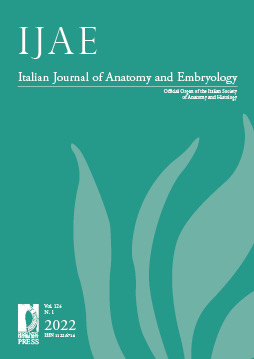Published 2022-09-21
Keywords
- anatomy,
- augmented reality,
- ceroplastic,
- history of medicine
How to Cite
Abstract
Ceroplastic, the art of wax modelling, is a depiction mode that has been used widely throughout time for artistic, religious and social purposes. During the 16th Century, ceroplastic became also an essential tool for medical education thanks to the creation of the first anatomical wax models. For centuries, anatomists have worked with artists with the aim of producing faithful and long-lasting wax artefacts that reproduce physiological and/or pathological conditions. Important figures such as Ercole Lelli and Anna Morandi Manzolini refined the techniques of the anatomical wax modelling and created works that are to date preciously conserved. The scientific and didactic value of these works was indisputable, for wax anatomical models have deeply facilitated the education of medical students in that time. Nowadays, a similar impact on medical education is given by new technologies such as augmented reality, that allows the addition of virtual contents to tangible anatomical 3D models. Under this light, anatomical wax models and augmented reality can be compared as two innovative tools that have changed the history of anatomical teaching.


